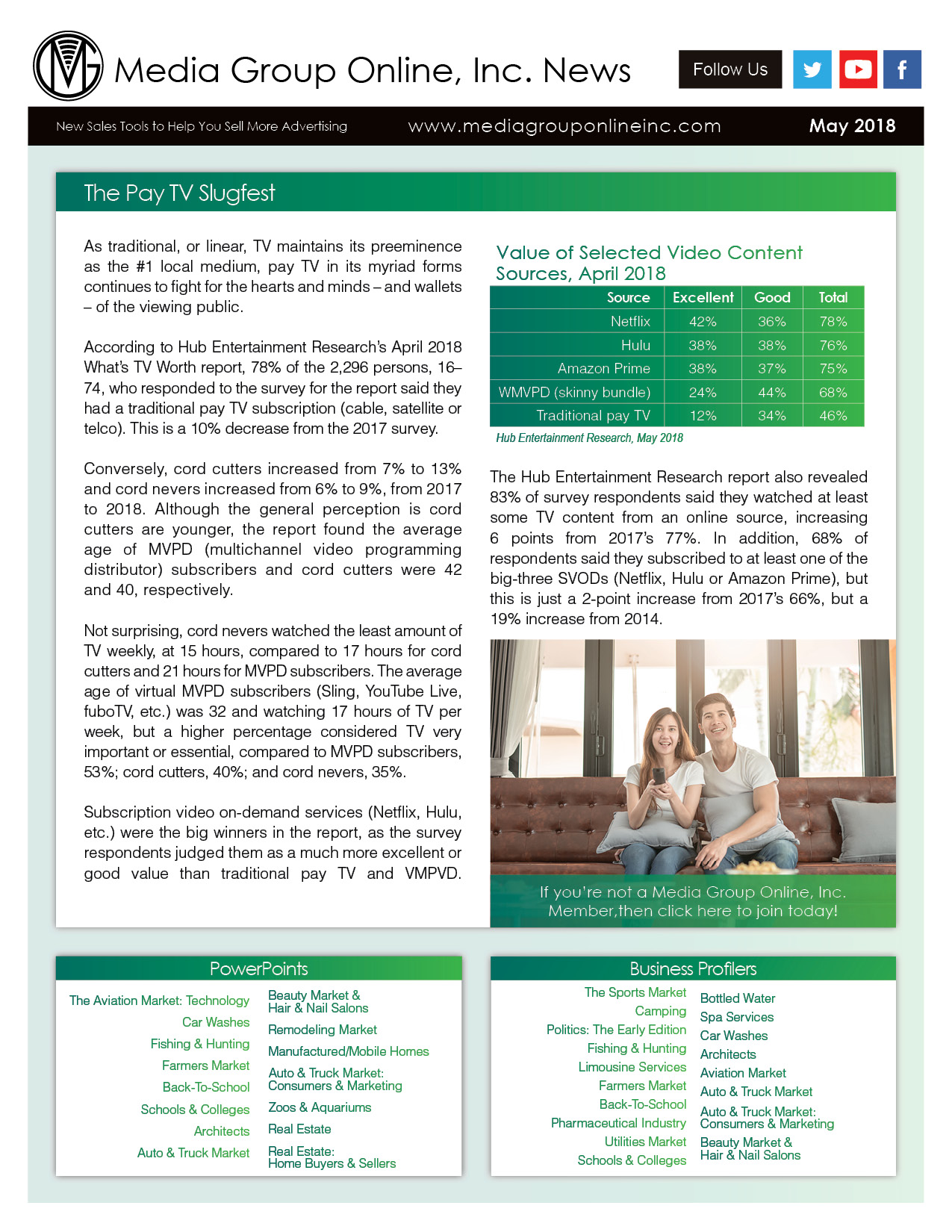The Pay TV Slugfest
As traditional, or linear, TV maintains its preeminence as the #1 local medium, pay TV in its myriad forms continues to fight for the hearts and minds – and wallets – of the viewing public.
According to Hub Entertainment Research’s April 2018 What’s TV Worth report, 78% of the 2,296 persons, 16–74, who responded to the survey for the report said they had a traditional pay TV subscription (cable, satellite or telco). This is a 10% decrease from the 2017 survey.
Conversely, cord cutters increased from 7% to 13% and cord nevers increased from 6% to 9%, from 2017 to 2018. Although the general perception is cord cutters are younger, the report found the average age of MVPD (multichannel video programming distributor) subscribers and cord cutters were 42 and 40, respectively.
Not surprising, cord nevers watched the least amount of TV weekly, at 15 hours, compared to 17 hours for cord cutters and 21 hours for MVPD subscribers. The average age of virtual MVPD subscribers (Sling, YouTube Live, fuboTV, etc.) was 32 and watching 17 hours of TV per week, but a higher percentage considered TV very important or essential, compared to MVPD subscribers, 53%; cord cutters, 40%; and cord nevers, 35%.
Subscription video on-demand services (Netflix, Hulu, etc.) were the big winners in the report, as the survey respondents judged them as a much more excellent or good value than traditional pay TV and VMPVD.
Value of Selected Video Content Sources, April 2018
| Source | Excellent | Good | Total |
| Netflix | 42% | 36% | 78% |
| Hulu | 38% | 38% | 76% |
| Amazon Prime | 38% | 37% | 75% |
| WMVPD (skinny bundle) | 24% | 44% | 68% |
| Traditional pay TV | 12% | 34% | 46% |
Hub Entertainment Research, May 2018
The Hub Entertainment Research report also revealed 83% of survey respondents said they watched at least some TV content from an online source, increasing 6 points from 2017’s 77%. In addition, 68% of respondents said they subscribed to at least one of the big-three SVODs (Netflix, Hulu or Amazon Prime), but this is just a 2-point increase from 2017’s 66%, but a 19% increase from 2014.



